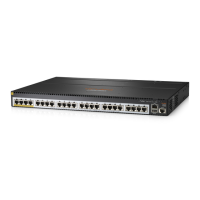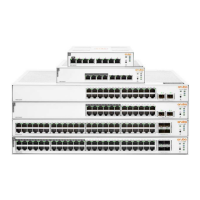186
After route reflection is disabled between clients, routes can still be reflected between a client
and a non-client.
• Confederation
Confederation is another method to manage growing IBGP connections in an AS. It splits an AS
into multiple sub-ASs. In each sub-AS, IBGP peers are fully meshed. As shown in Figure 56,
intra-co
nfederation EBGP connections are established between sub-ASs in AS 200.
Figure 56 Confederation network diagram
A non-confederation BGP speaker does not need to know sub-ASs in the confederation. It
considers the confederation as one AS, and the confederation ID as the AS number. In the
above figure, AS 200 is the confederation ID.
Confederation has a deficiency. When you change an AS into a confederation, you must
reconfigure the routers, and the topology will be changed.
In large-scale BGP networks, you can use both route reflector and confederation.
MP-BGP
BGP-4 carries only IPv4 unicast routing information. IETF extended BGP-4 by introducing
Multiprotocol Extensions for BGP-4 (MP-BGP). MP-BGP can carry routing information for multiple
address families, including IPv4 multicast, IPv6 unicast, IPv6 multicast, and VPNv4.
MP-BGP is backward compatible with BGP.
MP-BGP extended attributes
Prefixes and next hops are key routing information. BGP-4 uses update messages to carry the
following information:
• Feasible route prefixes in the Network Layer Reachability Information (NLRI) field.
• Unfeasible route prefixes in the withdrawn routes field.
• Next hops in the NEXT_HOP attribute.
BGP-4 cannot carry routing information for multiple network layer protocols.
To support multiple network layer protocols, MP-BGP defines the following path attributes:
• MP_REACH_NLRI—Carries feasible route prefixes and next hops for multiple network layer
protocols.
• MP_UNREACH_NLRI—Carries unfeasible route prefixes for multiple network layer protocols.

